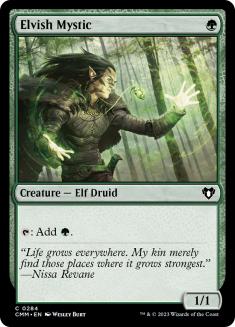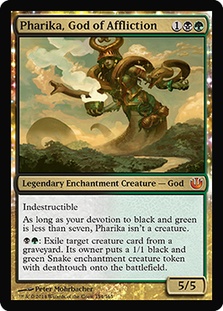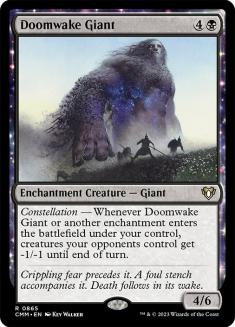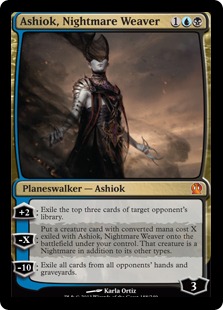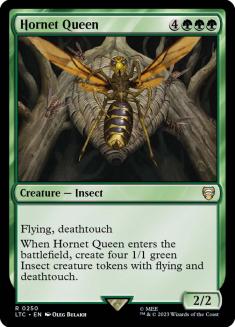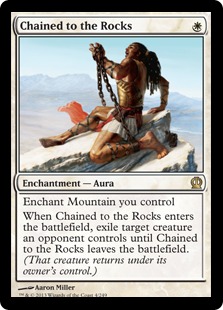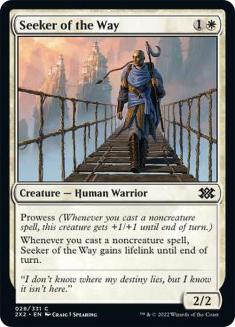If you’re anything like me, you consumed as much of the coverage available from this weekend as you possibly could. It was a bit harder for me, since I was
on the road, but I still gobbled up when able. There was a lot to choose from, but it was easy to land on SCGLive for coverage over the other offerings
(though I did take some time to rewatch the World Magic Cup coverage as well).
One of the things that I was most curious about was the new format of SCG Opens. I’ve long been a fan of the old structure of SCG events, but I definitely
understood the people that felt worn out by it. Let’s take the week before, for example:
The SCG Portland results featured a talented top 8, to be sure. But my
condolences have to go to Cody Colt and Quillian Rutherford, tied for Top 8 after nine rounds of Swiss, but just outside the spotlight because of
tiebreaks. At 413 players, the option at ten rounds was on the table, but only just barely.
If you’ve never done it, ten rounds is a grind. Magic is a grueling game just to begin with, but when you start a tournament knowing that you’re
going to be playing long into the night, there are a reasonable amount of players who might just bow out. I’m fortunate enough to live in a great Magic
city, but even among the veteran players, many of them had just given up on a “single day” event that might end up being eleven rounds (if you count the
first round of Top 8) for the chance to win the whole thing.
For me, I actually really enjoy this kind of day. It absolutely puts a damper on my overall performance when I’m playing a more controlling deck, as it can
be hard to get any reasonable kind of break, but I think of this as training. I’ve been doing quite well in Magic the last few years, and I think using the
Open Series circuit as a place to “work out” has been a huge part of that.
Now, the new system effectively is mimicking the official Grand Prix system, with nine rounds on Day 1, and 7-2 or better (or Top 64) making the cut to a
Day 2. The prize support also mimics Grand Prix, though slightly more top heavy: $5,000 for winning an SCG Open as compared to $4,000 for a GP. The total
payout in the main event is a little less than a GP (‘only’ $20,000, instead of $35,000), but there are another two full tournaments giving away
$5,000 each at the SCG weekend.
I’ve long-loved single format events for their ability to tell us about a field. With the Season Four Invitational taking the main portion of the
spotlight, we don’t have a full breakdown of the field for this event, so it won’t be as fruitful in exploring what the metagame looks like, but it can
still tell us something valuable.
This Standard Open in Seattle was ultimately won by Eric English and Sultai Reanimator:
Creatures (24)
- 2 Hornet Queen
- 1 Elvish Mystic
- 4 Sylvan Caryatid
- 4 Courser of Kruphix
- 4 Satyr Wayfinder
- 3 Doomwake Giant
- 1 Pharika, God of Affliction
- 1 Soul of Innistrad
- 4 Sidisi, Brood Tyrant
Lands (19)
Spells (17)

Though the same archetype as World Champion Shahar Shenhar’s Sultai list, it does have some very minor differences in the spell count from Shahar.
Eric plays:
Where Shahar plays:
It seems likely in a world where Jeskai Tokens was making more of an impact, having that extra Doomwake Giant (and zero Ashiok, Nightmare Weaver) would be
a really great metagame call. In addition, the “one elf” idea isn’t without precedent. Check out Glenn Jones’ list from a mere week before:
Creatures (23)
- 3 Hornet Queen
- 1 Elvish Mystic
- 4 Sylvan Caryatid
- 4 Courser of Kruphix
- 4 Satyr Wayfinder
- 2 Doomwake Giant
- 1 Reclamation Sage
- 4 Siege Rhino
Lands (24)
Spells (13)

While Glenn was running an Abzan build of Reanimator, the two archetypes share a lot of similarity in how they approach the game. Abzan Reanimator makes
more use of the brute force power of Siege Rhino, where Sultai Reanimator instead uses Sidisi, Brood Tyrant as both fuel for the deck and as the battering
ram to take down a game.
In both cases, there is an argument to be made for Elvish Mystic as a combination fifth Sylvan Caryatid/extra land with an upside. Ultimately, Eric’s
deck’s desire to gun for Jeskai Tokens is another reason to have the Elvish Mystic, since it can potentially mean that you can Doomwake Giant a turn
earlier, but you aren’t running so many of the card you have to cut valuable real estate for the second.
Ultimately, while Eric English was the ultimate champion of the event, he wasn’t the top finisher after the 15 rounds of Swiss. Here are the top archetypes
leading by the end of the Swiss rounds:
42 Points (14-1) – W/U Heroic
37 Points (12-2-1) – Abzan Reanimator and Sultai Reanimator
36 Points (12-3) – Abzan Reanimator and R/W Aggro
34 Points (11-3-1) – Temur Monsters, G/R Monsters, and Abzan Reanimator
When I look at the top of the field, there are three things that scream out to me:
1 – Wow, that is a lot of Whip of Erebos going on.
2 – It took four losses to miss Top 8.
3 – Zachary Jesse (the W/U Heroic player) prefers bashing to drawing in. Awesome.
What was it that these decks were preying on that they rose to the top? A quick glance at the layer just under the Top 8 actually supplies a lot of
insight:
33 Points (11-4) –
– Three Abzan Aggro
– Three Jeskai Tokens
– Two Temur Monsters
– Abzan Reanimator
– Abzan Midrange
– U/B Control
31 Points (10-4-1) —
– Heroic Ascendancy (Ivan Jen)
– Abzan Reanimator
– Abzan Aggro
– Jeskai Tokens
– W/U Heroic
– R/W Tokens
Looking at this portion of the field, I’m not surprised that Eric English and the other Reanimator decks did as well as they did. There are a lot
of Hordeling Outbursts down there, just under the very top portion of the field. Only one deck with Hordeling Outburst made the Top 8 of the Seattle Open,
but it took Eric English to bring his quest to a halt. Before he was defeated by Sultai Reanimator, Erik Pei first defeated a more traditional Abzan
Reanimator and then the top seed, W/U Heroic. Here is Erik’s list:
Creatures (15)
- 4 Stormbreath Dragon
- 2 Brimaz, King of Oreskos
- 4 Goblin Rabblemaster
- 1 Ashcloud Phoenix
- 4 Seeker of the Way
Planeswalkers (3)
Lands (9)
Spells (33)

This is not the pure R/W Tokens list that Sam Black played into the Top 8 of the Season Four Invitational. Instead, Eric Pei’s list is the “R/W Wreck ‘Em”
list BBD has been championing for a little while. BBD’s list is only
slightly different than what Erik Pei played; Erik cut two red sources to the mana (down to twenty), and ever-so-slightly shifted the sideboard. That’s it.
I actually find this list a little inspiring. I’ve long-been a champion for the kind of midrange red (Big Red) that this deck is a kissing cousin of. While
I’m not sure if Hordeling Outburst is actually the best card in Standard, or that Chandra, Pyromaster is the best Planeswalker (or any of BBD’s
other claims), the fact remains that Hordeling Outburst basically is just a very resilient three power ‘creature’ for three mana. The splashed color,
white, solves a huge number of problems because of its two four-ofs:
Being able to take out any creature (for the most part) with a single mana is pretty huge. While any Banishing Light-style effect is dangerous in this
current metagame, because this deck is also putting on pressure, it doesn’t actually have the same kinds of worries that a more controlling deck would have
once a Chained creature is freed by enchantment removal. Seeker of the Way does an awesome double duty, keeping the life total up, and keeping the pressure
on. The opening of turn 2 Seeker into turn 3 Hordeling Outburst puts on so much pressure that a little bit of leaning can knock down almost anyone.
At the same time, this deck isn’t just a purely aggressive deck, nor is it leaning entirely on tokens. When I worked on this kind of deck in the past, I was able to get a
ton of success with it. A part of the reason it worked is that as the initial rush of the deck was recovered from, some combination of the top end would
just clear out the game. Here is the version of the list I used to win a $5K with last year in Columbus:
Creatures (23)
- 4 Chandra's Phoenix
- 4 Ash Zealot
- 4 Rakdos Cackler
- 3 Boros Reckoner
- 4 Stormbreath Dragon
- 4 Firedrinker Satyr
Planeswalkers (2)
Lands (12)
Spells (23)

Comparing this to the “Wreck ‘Em” deck, I just see a ton in common in their approach. The red core, I expect, will be the center of what makes the deck
work today:
24-25 Land
This leaves about 13 cards to play with, potentially in any color. While I’m a bit taken with U/B Control right now, I know I intend to investigate this
base thoroughly.
While Erik Pei beat up on him with this deck, Zachary Jesse still did manage the overwhelmingly top performing deck in the Swiss, with W/U Heroic:
Creatures (16)
Lands (10)
Spells (34)

Good ol’ Tom Ross, shaking things up like he does. While Zachary’s deck runs fewer creatures and land than Tom does, that didn’t stop Zachary from putting
on the beatdown. Those creatures were mostly replaced by creature protection, and that land by more copies of Aqueous Form.
Either way, this deck basically plays at upgrading Theros Sealed to Constructed quality, building an absurd Hero, and then protecting it with
pseudo-counter magic until the opponent is dead. While this deck didn’t get as much success in the Top 8 as it saw in the Swiss, it is really worth noting
that a 14-1 record is pretty absurd. I couldn’t find any footage of the Zachary Jesse/Erik Pei matchup, but I’m certainly curious how things played out on
the table.
That last macro-archetype that was represented in the top 8 was Monsters. Two decks were represented here: John Bolt with G/R Monsters and Jeff Hoogland
with Temur Monsters. Jeff was quickly eliminated by eventual champion Eric English, but John Bolt overcame one of the Reanimator menace with his build.
Here is John’s list:
Creatures (28)
- 4 Elvish Mystic
- 1 Polukranos, World Eater
- 4 Stormbreath Dragon
- 4 Boon Satyr
- 4 Fanatic of Xenagos
- 4 Goblin Rabblemaster
- 4 Heir of the Wilds
- 3 Ashcloud Phoenix
Lands (11)
Spells (21)

I love the purity of this aggressive build, which almost looks retro in its construction. It starts out a little slow, only picking up steam at the three
mana mark, but at that moment, it’s pretty intense in its aggression. Everything at that point on up hits very hard, and the deck has a lot of
reach thanks to the combination of Crater’s Claws, Lightning Strike, and haste.
Much like the other red deck, I see a core that looks appealing:
24+ land
This core definitely needs the support of some big creatures to make the Claws work. In green, the Polukranos and Boon Satyr seem like a great fit. With an
Elvish Mystic draw, it just seems like this deck could be truly frightening; I have visions of turn 2 Fanatic of Xenagos into turn 3 Ashcloud Phoenix.
Ouch!
In many ways, I think that decks like this struggle against a classic build of Abzan Midrange, but for the most part, those lists were practically
non-existent. With the data I have, I can’t know for sure, but I suspect that these Abzan lists were pushed out by Reanimator strategies primarily, and by
Jeskai Tokens strategies secondarily. Having watched Abzan Midrange play against Reanimator strategies a lot, it seems clear that there really is a problem
there.
If you watched Patrick Chapin’s defeat by Shahar Shenhar, you know the script of how those games go. However, if you watch Abzan Midrange fight against
Abzan Reanimator (or even G/B Constellation), it can often just feel like too much is happening where the other deck goes over the top. Solving that is
going to be a critical thing for Abzan Midrange decks to have to try to do. Alternately, they could decide to just ‘join ’em’ and start slinging Whip
themselves.
The new SCG Open Series is just starting, but I have to say, I’m very much looking forward to playing in my first one. In the meantime, I’m pumped to
simply just have an Open without an Invitational; the Open Series was always one of the best ways to understand what is happening in Standard – with more
rounds, it is just going to get better for that.


